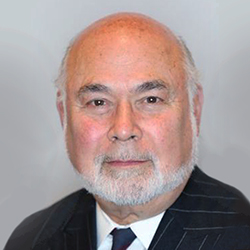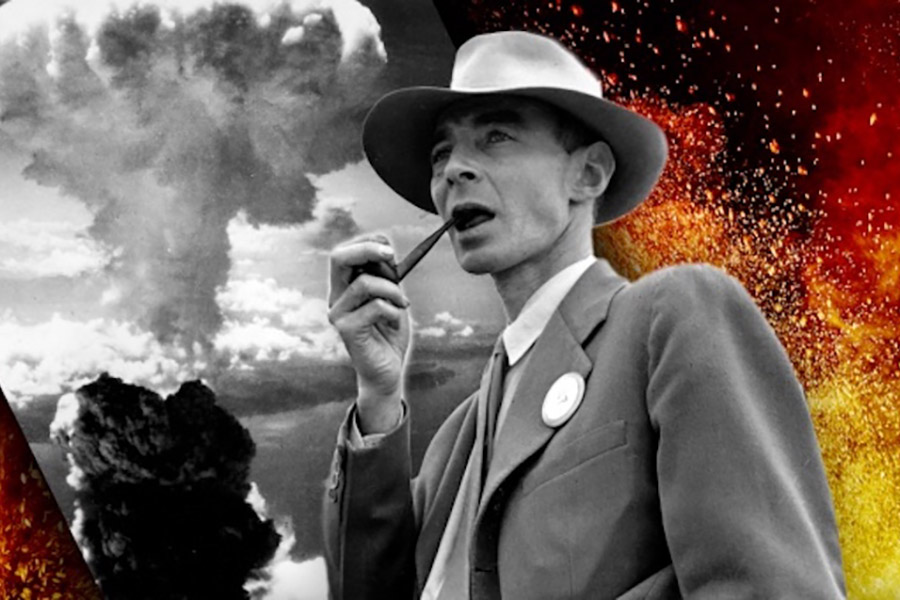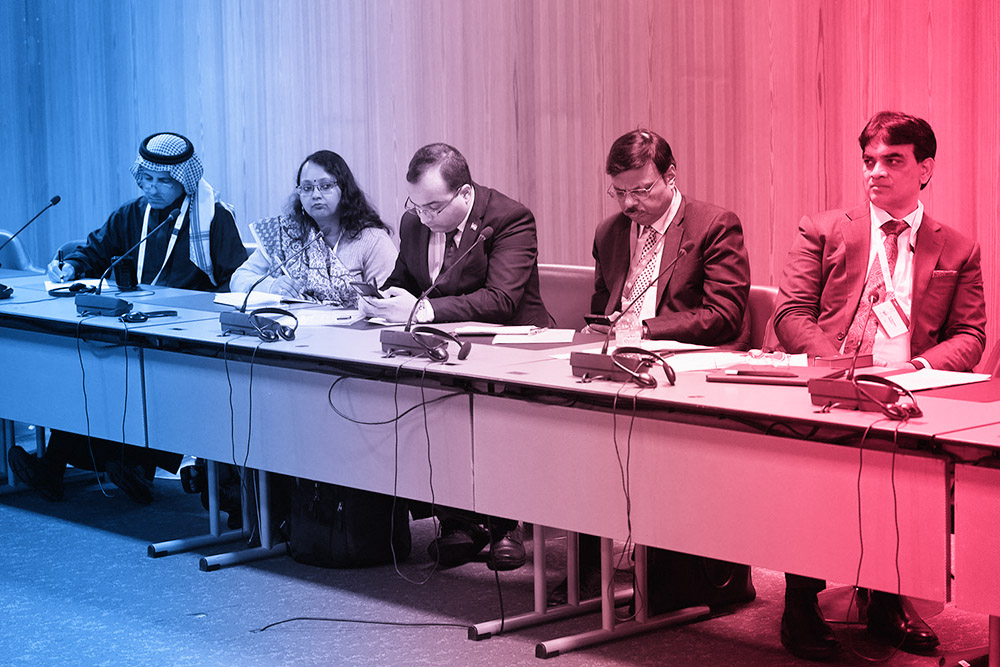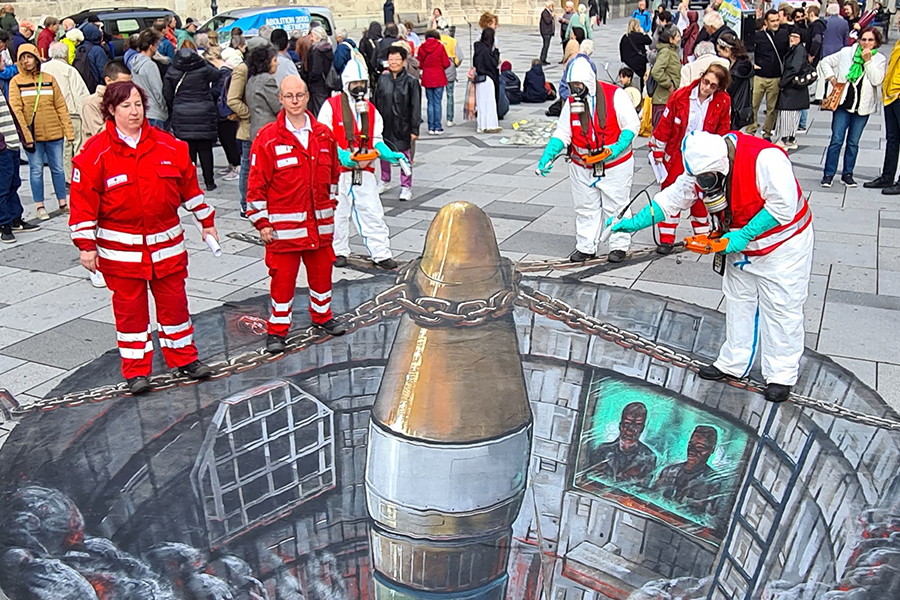June 4, 2000
By Alan Cranston and Tad Daley
Los Angeles Times
When Air Force One touched down in Moscow yesterday, nuclear politics again took center stage, just as they did so often during the Cold War. Nearly three decades ago, the Nixon administration and the Brezhnev regime came to agreement on a “big idea” about their nuclear-arms race: nuclear defense would beget ever more nuclear offense and diminish the security of all. Today, U.S. plans to deploy a National Missile Defense, or NMD, threaten to cast that idea onto the rubble heap of history. In doing so, and in insisting that Russia and the United States both retain thousands of nuclear warheads, they leave little hope for preventing some kind of nuclear conflagration in the 21st century.
No missile defense has ever been contemplated that could defend against a massive first strike from arsenals as large as those the United States and Soviet Union developed during the Cold War and still maintain. But, 30 years ago, it dawned on both Moscow and Washington that a defensive capability against nuclear attack would enhance the capability to launch a nuclear attack. Why? Because it would allow that state to initiate a massive first strike, then defend against what few weapons remained to the “first struck.” Missile defense doesn’t provide the capacity to defend against a first strike. It provides the capacity to launch one.
Just like 30 years ago, the virtually certain reaction from possible U.S. adversaries is to enhance their own offensive nuclear capabilities to retain a credible “second strike” retaliatory capability. The notion of the U.S. launching such a first strike may seem preposterous. But Russian and Chinese defense planners must evaluate not our intentions today but our capabilities tomorrow. This is especially true because the proposed NMD system may serve eventually as a foundation for a far more effective and widespread defense down the road.
In April, Russian President Vladimir V. Putin persuaded the Duma to ratify both START II and the Comprehensive Test Ban (which the U.S. Senate rejected last fall, motivated largely by political malice). But Putin and the Duma both insist that Russia will reconsider if the U.S. goes ahead with NMD, the only responsible position for Russian national security.
Moscow may well be bullied into acquiescence by the dominant U.S. bargaining position. But it will then have strong incentives to forever maintain “launch on warning,” by which ICBMs take off after incoming missiles have been spotted but before they hit their targets, and which several times in the past has brought the world within minutes of accidental atomic apocalypse. Even worse, in some sort of future political confrontation, Moscow might be tempted to strike first. With NMD in place, Russian policymakers may conclude: Use them or lose them.
START II and a hypothetical START III would reduce U.S. and Russian arsenals from roughly 6,000 warheads each to less than 3,500 each by 2007, then perhaps to 1,500 (Moscow’s position) or 2,500 (Washington’s) some time well into the second decade of the new century. Apart from the unconscionably slow pace, such bean-counting efforts do little to end the nuclear threat without two accompanying actions. First, reducing the danger of accidental or unauthorized launch by taking weapons off hair-trigger alert, ending launch on warning and separating warheads from delivery vehicles. Second, conceptualizing these moves as steps on the road to worldwide abolition. If Philadelphia or Vladivostok or Shanghai is obliterated by a 20-megaton nuclear detonation, it will matter little to the dead whether the device came from an arsenal of 6,000 or 600.
Recently, Texas Gov. George W. Bush, the GOP front-runner, suggested he might be willing to go even lower than 1,500. But his concomitant insistence on missile defense evokes memories of the 1986 Reykjavik summit between President Ronald Reagan and Soviet leader Mikhail S. Gorbachev, where they came within an eyelash of agreeing to go to zero, except for Reagan’s refusal to give up his “Stars Wars” missile-defense vision.
The Chinese case is different. Beijing possesses only about 20 missile launchers that could reach U.S. territory and, consequently, has never possessed a second-strike capability. The U.S. today could “take out” the entire Chinese nuclear arsenal without fear of retaliation.
But China’s nuclear-weapon capability does provide it with something else: the ability (in another of those Cold War phrases) to “inflict unacceptable damage” on the United States. This constrains U.S. policy options to China’s benefit, especially military operations directed against Chinese territory in some sort of crisis. U.S. NMD deployment, in a stroke, ends Beijing’s confidence in that deterrent.
The certain result will be enhanced Chinese nuclear capabilities. “Once you have got the shield,” says Sha Zukang, China’s top disarmament official, “others will develop a spear strong enough to penetrate it.” Wouldn’t it be better just to get rid of the spears?
Many have observed that an NMD system would do nothing to stop the nuclear terrorist who chooses to commit mass murder by boat, minivan, suitcase, cruise missile or light aircraft. But what is less often noted is that “nuclear deterrence” is equally useless in this regard. The nuclear terrorist not acting on behalf of any state is not “deterred” by thousands of U.S. nuclear warheads because there is no place and nobody to retaliate against. Imagine the consequences if the vehicles used at Oklahoma City and the World Trade Center had contained bombs made of plutonium instead of fertilizer.
Missile defense turns out to be much like expansion of the North Atlantic Treaty Organization, in that it will likely engender the eventuality it is intended to guard against. NATO expansion, which its proponents portray as a hedge against a “revanchist” or “expansionist” Russia, makes such a Russia more likely. Missile defense, portrayed by boosters as a hedge against more nuclear states and more nuclear missiles, makes that “dangerous world” more likely to unfold.
One lesson from the Cold War is that you cannot make yourself more secure by making your neighbors less secure. That was the great “mutual security” insight of Gorbachev and Foreign Minister Eduard A. Shevardnadze, and it led to the end of the Cold War. Vice President Al Gore seemed to grasp this fully, when he said last weekend at West Point, “Strategic stability either exists for both the United States and Russia, or neither.” But his support for missile defense indicates otherwise, if the U.S. proceeds to construct it over Russian objections.
President Bill Clinton could leave no greater legacy than first to renounce the “mutual insecurity” that lies down the road of missile defense and then to announce his intention to pursue a verifiable and enforceable dismantling and destruction of every nuclear weapon on Earth within a time-bound framework. Poll after poll around the world indicates that 70%-90% of citizens think this is the way to go. “The simplest and most direct answer to the problem of nuclear weapons,” says former U.S. arms negotiator Paul H. Nitze, himself no Cold War dove, “has always been their complete elimination.” That’s the way to prevent atomic annihilation in the 21st century. It’s humanity’s best hope for putting the nuclear genie back in its bottle forever. *
– – –
Alan Cranston, Former U.s. Senator, Is President of the Global Security Institute and Director of Its Nuclear Weapon Elimination Initiative. Tad Daley Is Vice President of the Institute and Associate Director of the Initiative
Jonathan Granoff is the President of the Global Security Institute, a representative to United Nations of the World Summits of Nobel Peace Laureates, a former Adjunct Professor of International Law at Widener University School of Law, and Senior Advisor to the Committee on National Security American Bar Association International Law Section.







